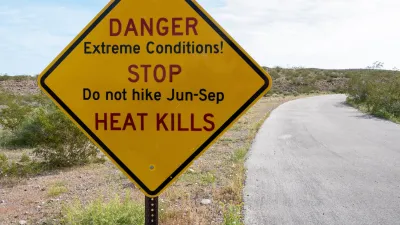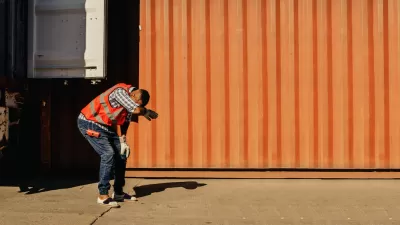Cities can protect residents from extreme heat by enhancing natural and built infrastructure, establishing heat response strategies, and implementing national policies for worker safety and disaster response.

Extreme heat is becoming increasingly common across the United States, with recent records showing the hottest months and years on record. The rising temperatures not only lead to more heat-related deaths but also impose significant economic costs. As Elizabeth Babcock and Michael Shank share in this article, while the long-term solution to this problem involves reducing fossil fuel consumption, there are several immediate actions cities can take to mitigate the impact of extreme heat and protect residents.
One effective approach is enhancing natural and built infrastructure to cool urban environments. Expanding tree canopies, especially in disadvantaged communities, can lower temperatures significantly. Green roofs, reflective cool roofs, and converting community spaces like libraries, recreation centers, and schools into cooling centers are practical measures. Additionally, creating resilience hubs in various community spaces can provide essential services and support year-round, helping residents cope with extreme heat.
Human and policy infrastructure also play crucial roles in mitigating heat impacts. Cities can appoint chief heat officers to coordinate heat response efforts across all departments and develop comprehensive heat strategies. Partnering with community groups to distribute cooling resources and focusing on efficient, low-carbon cooling solutions are essential steps. Nationally, establishing a heat safety standard for workers and creating a disaster declaration capacity for heat at the federal level are necessary to protect public health and ensure a robust response to extreme heat events.
To learn more, please read the source article.
FULL STORY: 4 ways that cities can and should protect their citizens from extreme heat

Planetizen Federal Action Tracker
A weekly monitor of how Trump’s orders and actions are impacting planners and planning in America.

San Francisco's School District Spent $105M To Build Affordable Housing for Teachers — And That's Just the Beginning
SFUSD joins a growing list of school districts using their land holdings to address housing affordability challenges faced by their own employees.

The Tiny, Adorable $7,000 Car Turning Japan Onto EVs
The single seat Mibot charges from a regular plug as quickly as an iPad, and is about half the price of an average EV.

Seattle's Plan for Adopting Driverless Cars
Equity, safety, accessibility and affordability are front of mind as the city prepares for robotaxis and other autonomous vehicles.

As Trump Phases Out FEMA, Is It Time to Flee the Floodplains?
With less federal funding available for disaster relief efforts, the need to relocate at-risk communities is more urgent than ever.

With Protected Lanes, 460% More People Commute by Bike
For those needing more ammo, more data proving what we already knew is here.
Urban Design for Planners 1: Software Tools
This six-course series explores essential urban design concepts using open source software and equips planners with the tools they need to participate fully in the urban design process.
Planning for Universal Design
Learn the tools for implementing Universal Design in planning regulations.
Smith Gee Studio
City of Charlotte
City of Camden Redevelopment Agency
City of Astoria
Transportation Research & Education Center (TREC) at Portland State University
US High Speed Rail Association
City of Camden Redevelopment Agency
Municipality of Princeton (NJ)





























